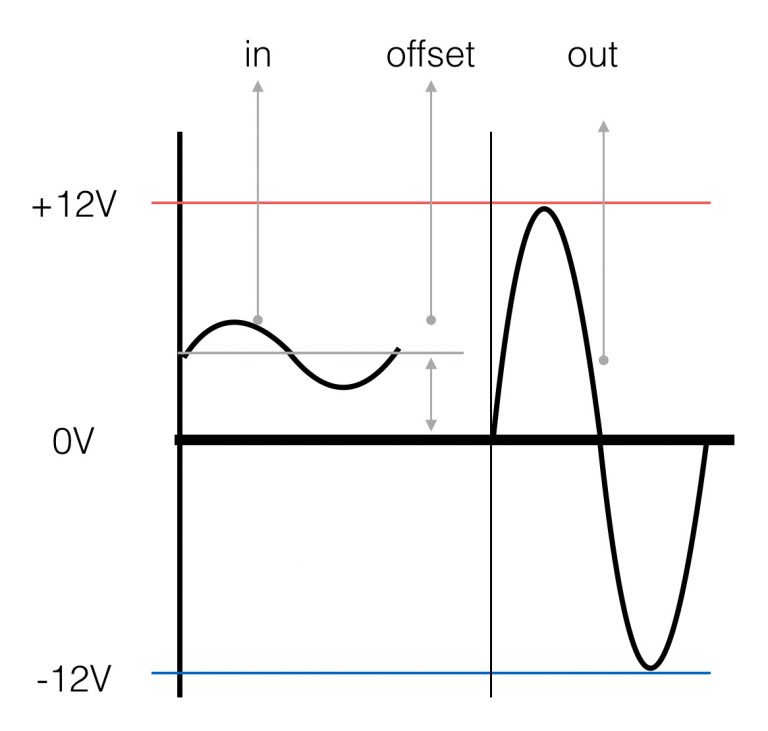

It was intended to deal with signals in the range of ☑0V. The P45 (1961) had a gain of 94dB and ran on ☑5V rails. They usually had hand-selected resistors in order to improve things such as voltage offset and drift. These op-amps were effectively small circuit boards with packages such as edge-connectors. By 1961, solid-state, discrete op-amps were being produced. The introduction of the planar process in 1959 made transistors and ICs stable enough to be commercially useful. With the birth of the transistor in 1947, and the silicon transistor in 1954, the concept of ICs became a reality. This op-amp was based on a descendant of Loebe Julie's 1947 design and, along with its successors, would start the widespread use of op-amps in industry. It sold in an octal package and had a (K2-P) chopper add-on available that would effectively "use up" the non-inverting input. In 1953, vacuum tube op-amps became commercially available with the release of the K2-W from GAP/R.

Techniques that used the non-inverting input regularly would not be very popular until the 1960s when op-amp ICs started to show up in the field. Nevertheless, the improved characteristics of the chopper-stabilized op-amp made it the dominant way to use op-amps. Unfortunately, any design that used a chopper couldn't use their non-inverting input for any other purpose.

This improved the gain of the op-amp while significantly reducing the output drift and DC offset. This signal is then amplified, rectified, filtered and fed into the op-amp's non-inverting input. The chopper gets an AC signal from DC by switching between the DC voltage and ground at a fast rate (60Hz or 400Hz). This set-up uses a normal op-amp with an additional AC amplifier that goes alongside the op-amp.

Goldberg, designed a chopper stabilized op-amp. The differential input made a whole range of new functionality possible, but it would not be used for a long time due to the rise of the chopper-stabilized amplifier. Its input stage used a long-tailed triode pair with loads matched to reduce drift in the output and, far more importantly, it was the first op-amp design to have two inputs (both inverting and non-inverting). This op-amp, designed by Loebe Julie, was superior in a variety of ways. In this same paper a footnote mentioned an op-amp design by a student that would turn out to be quite significant. In 1947, the op-amp was first formally defined and named in a paper by Professor John R. This artillery director worked with the SCR584 radar system to achieve extraordinary hit rates (near 90%) that would not have been possible otherwise. Throughout WWII, Swartzel's design proved its value by being liberally used in the M9 artillery director designed at Bell Labs. In contrast to modern day op-amps, it had a single inverting input and an output instead of the modern two differential inputs where one is inverting and the other is not. This design used three vacuum tubes to achieve a gain of 90dB and operated on voltage rails of ☓50V. Modern designs are electronically more rugged than earlier implementations and some can sustain direct short-circuits on their outputs without damage.Īn op-amp, defined as a general-purpose, DC-coupled, high gain, inverting feedback amplifier, is first found in US Patent 2,401,779 "Summing Amplifier" filed by Karl D. Many standard IC op-amps cost only a few cents in moderate production volume however some integrated or hybrid operational amplifiers with special performance specifications may cost over $100 US in small quantities. Op-amps are among the most widely used electronic devices, used in a vast array of consumer, industrial, and scientific devices. High input impedance at the input terminals and low output impedance are typical characteristics. Typically the output of the op-amp is controlled either by negative feedback, which largely determines the magnitude of its output voltage gain, or by positive feedback, which facilitates regenerative gain and oscillation. An operational amplifier, often called an 'op-amp', is a DC-coupled high-gain electronic voltage amplifier with differential inputs and, usually, a single output.


 0 kommentar(er)
0 kommentar(er)
